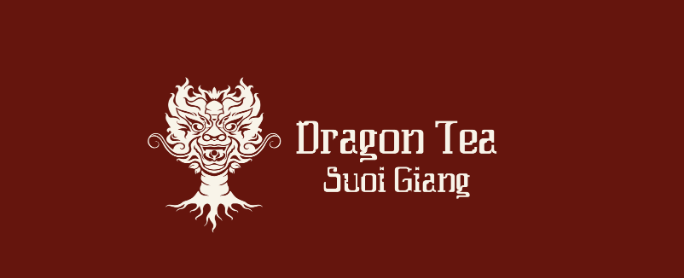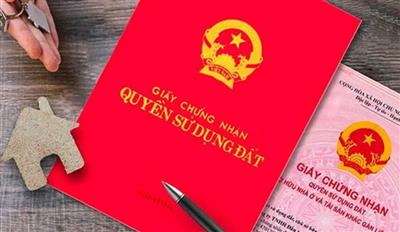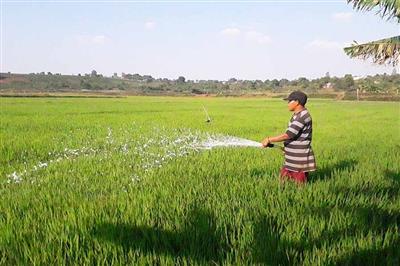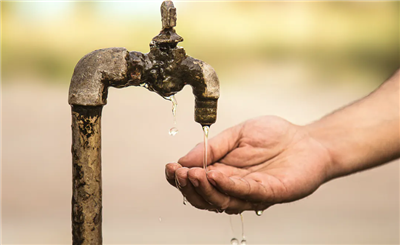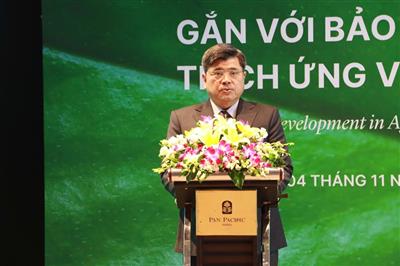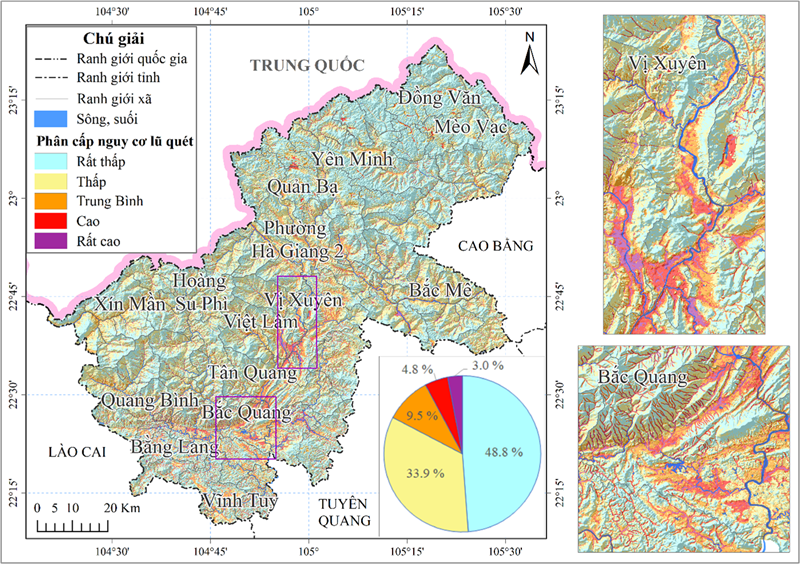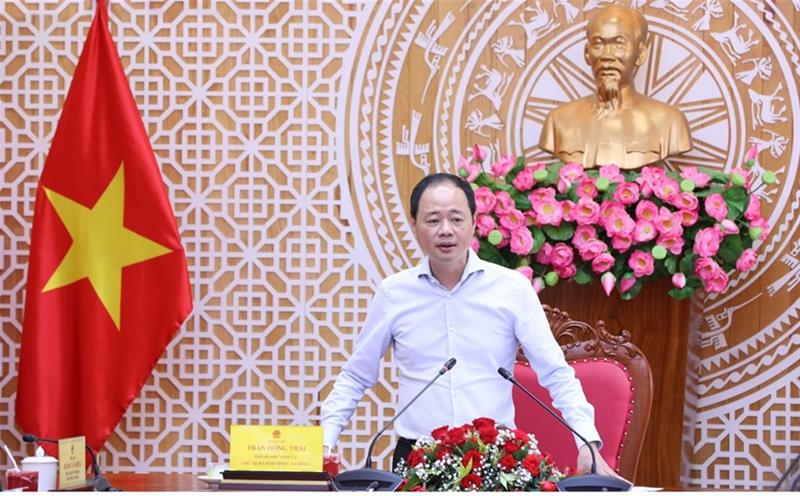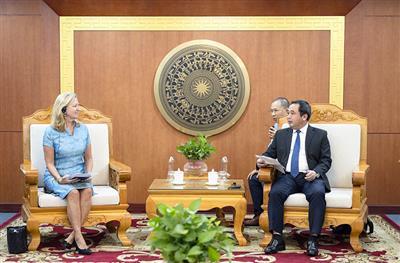
Vietnam’s agrifood momentum: Progress, partnerships, and a sustainable path forward
14/11/2025TN&MTVietnam’s agriculture has long stood at the heart of the country’s remarkable social and economic transformation. In less than four decades, the country moved from food shortages and dependency on aid to becoming a powerhouse in global agricultural markets. This transition is more than a story of increased yields or rising exports—it is about the interplay of visionary policy reforms, farmer empowerment, global integration, and the strategic use of partnerships that have collectively reshaped Vietnam’s development trajectory.
Today, agriculture supports the livelihoods of nearly one-third of Vietnam’s population, provides food security, and contributes around 12–13 percent of GDP. It has also played a central role in poverty reduction and rural transformation. At the same time, Vietnam has emerged as one of the world’s top exporters of rice, coffee, seafood, cashew nuts, and pepper reinforcing its standing in global food systems.

Mr. Vinod Ahuja, FAO Representative in Vietnam
Yet success has introduced new complexities. Rising incomes are driving shifts in diets toward more diverse and nutritious foods. Environmental pressures—soil degradation, water scarcity, greenhouse gas emissions, and biodiversity loss—are intensifying. Climate change is exacerbating vulnerabilities, especially in the Mekong and Red River deltas. Emerging animal diseases, including zoonoses, continue to threaten both public health and agricultural livelihoods. These interlinked challenges highlight the urgent need for a more resilient, inclusive, and sustainable food systems approach.
The government has already recognized this imperative. Policies such as the National Action Plan on Food Systems Transformation (2023), the Strategy for Sustainable Agriculture and Rural Development (2021–2030), and the National One Health Action Plan collectively reflect a bold vision. At the same time, Vietnam’s commitment to halting deforestation by 2030 and net-zero by 2050 underscore the country’s determination to align agricultural growth with climate resilience and environmental stewardship. Together, these policies signal a commitment to integrate productivity, sustainability, health, and inclusiveness.
Progress and achievements
Vietnam’s agricultural progress rests on bold policy reforms and the resilience of its people. The Doi Moi reforms of 1986 set the country on a market-oriented path, and the 1993 Land Law gave millions of households long-term land-use rights that encouraged them to invest, innovate, and diversify. That framework has continued to evolve, with the 2024 revision focusing on consolidation, transparency, and sustainable land use—priorities essential for modern, climate-resilient agriculture. Alongside these policies, large-scale investment in irrigation and rural infrastructure transformed the Red River and Mekong deltas into highly productive zones, while the spread of high-yield rice varieties, fertilizers, and mechanization propelled Vietnam from food deficit to surplus, making it one of the world’s leading rice exporters by the mid-1990s.
Over time, agriculture diversified beyond rice. Coffee production expanded rapidly, making Vietnam the world’s second-largest coffee exporter. Cashew, pepper, fruit, and aquaculture also grew, with seafood exports propelling the country into the global top five. Integration into global markets, including accession to the WTO in 2007 and a series of free trade agreements, broadened export opportunities. Partnerships with FAO and other international organizations supported institutional reforms, food safety, climate adaptation, and digital innovation. Policy frameworks have continued to evolve, signaling Vietnam’s determination to link progress with sustainability, health, and resilience.
Institutional innovation has guided these advances. The Agricultural Restructuring Plan, sustainable development strategies, and initiatives such as the “One Million Hectares of High-Quality, Low-Emissions Rice in the Mekong Delta” program demonstrate a commitment to aligning productivity with climate and environmental goals. Vietnam’s contributions extend globally through South-South and Triangular Cooperation, sharing lessons on rice, aquaculture, and rural development, and reinforcing its reputation as both a beneficiary and a provider of agricultural expertise.
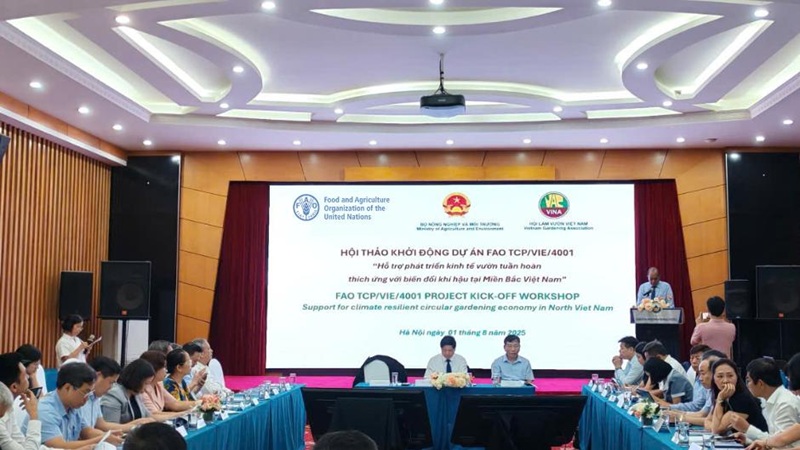
“The ‘Support for climate-resilient circular gardening economy in North Vietnam’ project was launched on 1 August 2025. Implemented by FAO and VACVINA with support from NAEC and the Ministry of Agriculture and Environment, the initiative helps smallholder farmers develop self-sustaining, climate-resilient gardens that recycle organic waste and use resources efficiently, contributing to Viet Nam’s green-growth goals and FAO’s ‘four betters’ (Photo: FAO)
Lessons
Lesson 1: Visionary reforms and farmer empowerment
Vietnam’s agricultural transformation rests on two mutually reinforcing pillars: bold, forward-looking policy reforms and the empowerment of farmers as active agents of change. Together, they turned a country once dependent on food aid into one of the world’s leading agricultural producers and exporters within a single generation.
In the late 1970s and early 1980s, Vietnam faced severe food shortages. The centrally planned system offered little incentive for farmers, as collective farming limited autonomy and state-controlled markets stifled initiative. By 1980, Vietnam was a net food importer, reliant on international aid. The launch of Doi Moi in 1986 marked a turning point. Decollectivization gave households responsibility for production and the right to sell surplus after meeting quotas. Market liberalization and gradual price reforms followed, unleashing productivity and innovation. Within a few years, Vietnam achieved rice self-sufficiency and, by the early 1990s, emerged as a significant exporter.
The 1993 Land Law cemented this progress. By granting households long-term, inheritable, and transferable land-use rights, it provided security that encouraged investment and diversification. Farmers could mortgage land rights for credit, expand production, and adopt new technologies. The results were striking: the Mekong Delta became a rice powerhouse, the Central Highlands a global coffee hub, and coastal regions leaders in aquaculture. Farmers were no longer passive recipients of state directives; they became entrepreneurs shaping markets and communities.
Policy reforms were complemented by major investments in infrastructure and technology. Expanded irrigation allowed double and triple cropping, rural roads improved access to markets, and partnerships with FAO, IRRI, and others introduced stress-tolerant crop varieties and modern practices. This ensured that growth was driven not only by expanded land use but also by innovation and efficiency.
Continuity and adaptability have been equally important. Over decades, reforms were not reversed but adjusted to meet new challenges. In the 2000s, diversification into coffee, cashew, pepper, fruit, and aquaculture was prioritized. More recently, policies have integrated sustainability, food safety, and climate resilience. The National Action Plan on Food Systems Transformation (2023), the National Nutrition Strategy (2021–2030), and the net-zero by 2050 pledge all reflect an evolving vision that links agriculture with health, environment, and inclusiveness.
Looking ahead, farmer empowerment and policy innovation must adapt to new challenges. Priorities include ensuring equitable access to land and services for women, youth, and ethnic minorities; expanding digital inclusion for smallholders; embedding nutrition into agricultural and trade policies; and strengthening farmer participation in decision-making.
The consolidated lesson is clear: visionary reforms unlock farmer potential, and empowered farmers drive transformation. Vietnam’s experience shows that when governments create enabling policies and invest in infrastructure and innovation, farmers respond with resilience and creativity. Together, policy leadership and farmer empowerment can transform national food systems, turning vulnerability into strength and laying the foundation for sustainable, inclusive growth.
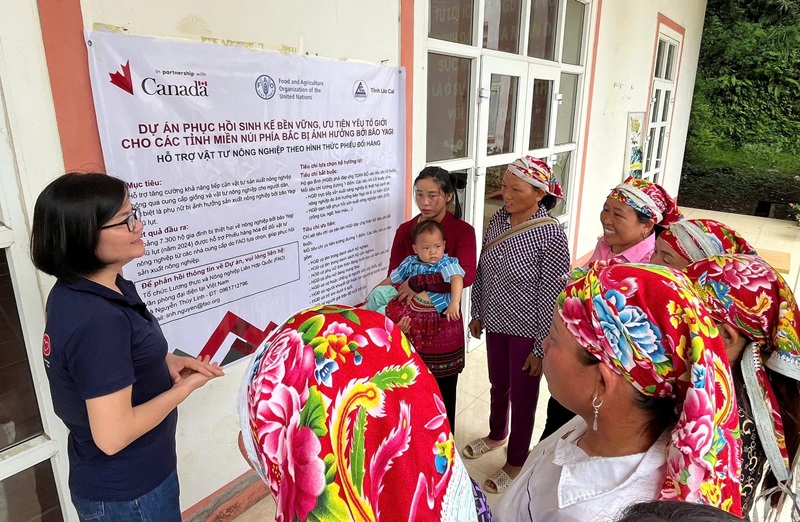
From 7–10 July, FAO in Viet Nam and the Lao Cai provincial Division of Crop Production, Plant Protection, Animal Health and Aquaculture (under the Ministry of Agriculture and Environment) visited eight communes to assess agricultural input needs of over 3,000 farming households (Photo: FAO)
Lesson 2: Balancing exports, nutrition, and sustainability
Vietnam’s agriculture has achieved global recognition for its export success. The country is consistently ranked among the top exporters of rice, coffee, pepper, cashew nuts, and seafood. This performance has positioned Vietnam as a reliable partner in global food supply, while providing resources that supported national development and poverty reduction.
Yet alongside this success, the sector must address new and complex challenges. Export growth, while vital, must be balanced with ensuring nutritious, safe, and affordable food for the domestic population, and achieved in ways that safeguard natural resources for future generations. The lesson is clear: transformation is sustainable only when export competitiveness, dietary quality, and environmental stewardship reinforce one another.
Nutrition gains and new challenges
Vietnam has made remarkable progress in reducing hunger and undernutrition. The prevalence of undernourishment fell from 45 percent in 1990 to below 7 percent in 2022, while child stunting dropped from over 60 percent to under 20 percent. These gains reflect decades of investment in food availability, rural incomes, and public health.
But dietary quality remains uneven. Consumption is still heavily weighted toward white rice, with insufficient fruits, vegetables, and whole grains. High sodium intake and rising consumption of processed foods and sugary drinks have contributed to a growing burden of non-communicable diseases, particularly in cities. This “double burden” of malnutrition—persistent micronutrient deficiencies alongside obesity and NCDs—underscores the need for more nutrition-sensitive agricultural and food policies.
Affordability further complicates the picture. According to FAO’s State of Food Security and Nutrition in the World report, nearly 3.1 billion people globally could not afford a healthy diet in 2021, including around 120 million in East and Southeast Asia. In Vietnam, the cost of a healthy diet is estimated at around USD 3.50 per person per day—still beyond the reach of millions of low-income households. Making healthy diets more affordable and accessible is therefore as urgent as boosting production.

On 22 May 2025, FAO and the Fruit and Vegetable Research Institute (FAVRI) concluded the four-year ‘Smart Farming for the Future Generation’ project in Moc Chau, Son La. Funded by the Republic of Korea, the project advanced sustainable farming, improved local livelihoods and supported environmental conservation. FAO remains committed to scaling up this smart-farming approach across Viet Nam
Policy and environmental responses
Vietnam has already begun to tackle these challenges. The National Nutrition Strategy (2021–2030) and the Food Systems Transformation Action Plan (2023) explicitly link agriculture, trade, and health, embedding nutrition into broader food-system goals. School feeding programs, rice fortification, and campaigns promoting fruit and vegetable consumption reflect growing recognition that nutrition outcomes depend on how food is produced, processed, and marketed.
At the same time, export growth has placed pressure on land, water, and ecosystems. Intensive farming has contributed to soil degradation, nitrogen losses, biodiversity decline, and rising greenhouse gas emissions from rice and livestock. The government has responded with strategies on sustainable agriculture, soil health, and the circular economy, promoting bio-fertilizers, soil testing, crop rotations, and recycling of residues and livestock waste. Expanding certification and traceability systems also helps meet rising global demand for sustainability credentials.
Aligning priorities
Balancing exports, nutrition, and sustainability is not a zero-sum exercise. Export earnings can finance nutrition programs and investments in sustainability. Nutrition-sensitive agriculture ensures that trade-oriented growth also benefits domestic consumers. And sustainable practices strengthen competitiveness by meeting international standards and preserving long-term productivity.
Private-sector and cooperative engagement are essential. Coffee companies promoting sustainable certification, seafood exporters investing in traceability, and food processors reformulating products to reduce sodium or sugar all show how business incentives can align with public goals. Cooperatives also link smallholders to premium markets while promoting good practices.
A forward-Looking agenda
Looking forward, Vietnam’s challenge is to deepen the integration of trade, nutrition, and sustainability by:
• Embedding nutrition objectives, including affordability, into agricultural and trade policy.
• Expanding certification, traceability, and circular economy approaches.
• Strengthening farmer and private-sector incentives for sustainable production.
• Ensuring women, youth, and marginalized groups benefit from export opportunities and improved diets.
The consolidated lesson is clear: exports, nutrition, sustainability, and affordability are not competing goals but interdependent priorities. Vietnam has shown it can feed its people, supply the world, and protect its environment. The task now is to sustain this balance so that agricultural transformation continues to deliver prosperity, resilience, and health for generations to come.
Lesson 3: Climate resilience and sustainability in practice
Vietnam is among the world’s most climate-vulnerable countries. Rising seas, saline intrusion, and extreme weather threaten the Red River and Mekong deltas, while intensive farming has degraded soils, reduced nutrients, and eroded biodiversity. These pressures highlight an essential lesson: resilience and sustainability are not optional but the foundation of Vietnam’s agricultural future.
Climate-smart practices
Rice production, central to food security and exports, is highly exposed to climate risks. Vietnam has pioneered approaches such as Alternate Wetting and Drying (AWD), salinity-tolerant varieties, and rice–shrimp rotations. These practices conserve water, cut methane emissions, and sustain yields. The flagship One Million Hectares of High-Quality, Low-Carbon Rice program illustrates how adaptation, mitigation, and competitiveness can be pursued together.
Aquaculture is adapting through biosecurity, disease-resistant breeds, and improved water management, while livestock producers are turning to heat-tolerant breeds, better housing, and improved feed. Diversification into fruits, vegetables, legumes, and agroforestry spreads risks and enhances ecological balance.
Sustainable resource management
Climate resilience depends on sustainable soil, water, and ecosystems. Years of monocropping and fertilizer misuse have depleted soil health. The draft National Soil Health Strategy (2022–2030) promotes balanced fertilizers, soil testing, and bio-fertilizers. Healthy soils both sustain productivity and store carbon.
Water management is equally vital. Modern irrigation, water pricing reform, and conservation technologies are needed, while restoring mangroves, wetlands, and watersheds provides natural buffers against floods and salinity, as well as biodiversity protection.
Circular economy and innovation
Circular economy models reduce waste and create value. Crop residues can be composted, livestock waste converted to biogas or organic fertilizer, and food losses cut through better storage and consumer awareness. Pilot projects show promise, and the National Action Plan on Circular Economy (2025) aims to scale them nationwide.
Innovation is a critical enabler. Digital tools—drones, sensors, satellite data—support precision agriculture, while mobile apps provide real-time updates on weather, pests, and markets. Research partnerships with FAO, CGIAR, and local universities are generating stress-tolerant crops, integrated pest management, and other climate-smart solutions.
Equity and inclusion
Resilience must be socially inclusive. Women, youth, and ethnic minorities often lack access to land, finance, and technology, yet they are central to adaptation. Training, joint land titling, and digital access can strengthen both social equity and environmental outcomes.
Financing the transition
Scaling resilience requires investment. Vietnam’s Payments for Forest Environmental Services (PFES) shows how communities can be compensated for protecting ecosystems. Expanding such models, along with green finance, carbon credits, and climate funds, will provide resources for climate-smart agriculture.
Policy and global leadership
Vietnam’s pledge of net-zero by 2050 reflects strong political will. The Strategy for Sustainable Agriculture and Rural Development (2021–2030) and updated climate commitments anchor this ambition. International cooperation—through FAO, IRRI, CGIAR, and South-South partnerships—provides knowledge and tools to accelerate progress.
The way forward
The lesson is clear: climate resilience and sustainability must permeate Vietnam’s agrifood system, from farm to market. Scaling climate-smart practices, circular economy models, soil and water conservation, inclusive approaches, and innovative financing will not only safeguard achievements but also open pathways to green growth.
Vietnam’s experience shows resilience is not just about managing risks—it is about shaping a future where agriculture drives prosperity while protecting people and the environment. By aligning productivity, competitiveness, and sustainability, Vietnam is charting a path with relevance well beyond its borders.
Lesson 4: Partnerships as a multiplier
Vietnam’s agricultural transformation has been powered not only by national reforms and farmer ingenuity but also by strong partnerships. Spanning governments, international organizations, the private sector, research institutions, and communities, these alliances have multiplied impact, mobilized knowledge and finance, and created pathways for global leadership.
Multilateral and bilateral support
From the early years of reform, international organizations provided essential backing. FAO, together with IFAD and the World Bank, delivered technical assistance, investments, and institutional strengthening. FAO introduced improved crop varieties, supported irrigation development, modernized extension services, and built national food security monitoring systems. Bilateral donors reinforced these gains with support for infrastructure, capacity, and market access. These combined efforts helped Vietnam transition from food deficit to surplus and later to export leadership.
Private-sector engagement
Domestic and international businesses have been key to aligning commercial incentives with national priorities. Coffee companies advanced certification schemes, while seafood exporters invested in traceability and compliance with international standards. Partners supported this process by strengthening food safety systems, harmonizing SPS measures, and building capacity for smallholders and cooperatives to access high-value markets. Public–private partnerships, often facilitated with FAO’s technical guidance, mobilized resources for innovation, infrastructure, and farmer training.
Research and innovation networks
International research institutions such as IRRI and CGIAR introduced stress-tolerant crops, aquaculture technologies, and climate-smart practices. Other partners complemented these contributions by piloting climate-smart practices, supporting policy research, and promoting farmer field schools—a methodology pioneered by FAO that has empowered Vietnamese farmers to adopt sustainable practices. Together, these networks ensured that global science was adapted to local realities.
Community and local contributions
At the grassroots, cooperatives and farmer organizations enabled collective marketing and adoption of sustainable practices. NGOs advanced nutrition, women’s empowerment, and farmer-to-farmer learning. FAO supported these efforts by promoting women’s leadership in cooperatives, building resilience to animal health risks, and embedding One Health into community-level training.
Regional and global cooperation
Vietnam’s partnerships extend well beyond its borders. Through ASEAN and Mekong platforms, the country collaborates on pests, diseases, and water governance. A central example is One Health, where collaboration with WHO, WOAH, UNEP, and FAO has strengthened Vietnam’s capacity to prevent, detect, and respond to zoonotic threats. At the same time, South–South and Triangular Cooperation has enabled Vietnam—often with FAO’s facilitation—to share lessons on rice, aquaculture, and One Health with countries in Africa, Asia, and Latin America.
New frontiers of partnership
Looking ahead, partnerships will be vital in scaling climate finance, advancing digital transformation, and embedding nutrition, sustainability, and One Health in food systems. The role of international organizations, with FAO as a neutral convener, will remain central—linking Vietnam to climate funds, promoting digital innovation, and ensuring that women, youth, and marginalized groups benefit from opportunities.
The lesson
Vietnam’s experience shows that partnerships are a force multiplier. Aligned with clear national strategies, they have mobilized resources, strengthened institutions, accelerated innovation, and fostered inclusion. Deepening these alliances will be essential to sustain progress and consolidate Vietnam’s leadership in building sustainable, resilient, and inclusive agrifood systems.
Looking ahead
Vietnam’s agriculture is entering a new phase, consolidating past achievements while preparing for future challenges. Having secured food self-sufficiency, reduced poverty, and become a global export leader, the sector must now sustain growth through sustainability, innovation, and inclusiveness. Priorities include scaling up circular economy and soil health initiatives, strengthening water governance and ecosystem protection, expanding certification and traceability systems, mobilizing finance for green transitions, and ensuring equitable gains for women, youth, and marginalized groups.
Opportunities are substantial. Green and low-carbon agriculture is advancing through initiatives such as the “One Million Hectares of High-Quality, Low Emissions Rice in the Mekong Delta” aligning productivity with climate goals. Expanding similar models in livestock and aquaculture will reinforce competitiveness in markets where sustainability credentials are critical. Digitalization—through precision farming, blockchain traceability, mobile advisory services, and e-commerce—offers another lever to improve efficiency and connect farmers more closely with consumers. At the same time, healthier diets must remain a priority. Addressing micronutrient deficiencies and rising non-communicable diseases requires nutrition objectives to be integrated into agricultural, trade, and education policies.
Vietnam is also poised to expand its South-South leadership. Its rapid transition, from rice intensification to aquaculture development, offers valuable lessons for other developing countries and reinforces its role as both contributor and beneficiary of global agricultural progress. Yet challenges remain: climate risks to key production zones, land fragmentation, water scarcity, biodiversity loss, and an aging rural workforce. Anchoring future strategies in sustainability, resilience, and health—aligned with FAO’s Four Betters—will allow Vietnam to safeguard its achievements while shaping agrifood systems that benefit both its people and the wider world.
Vinod Ahuja
FAO Representative in Viet Nam

